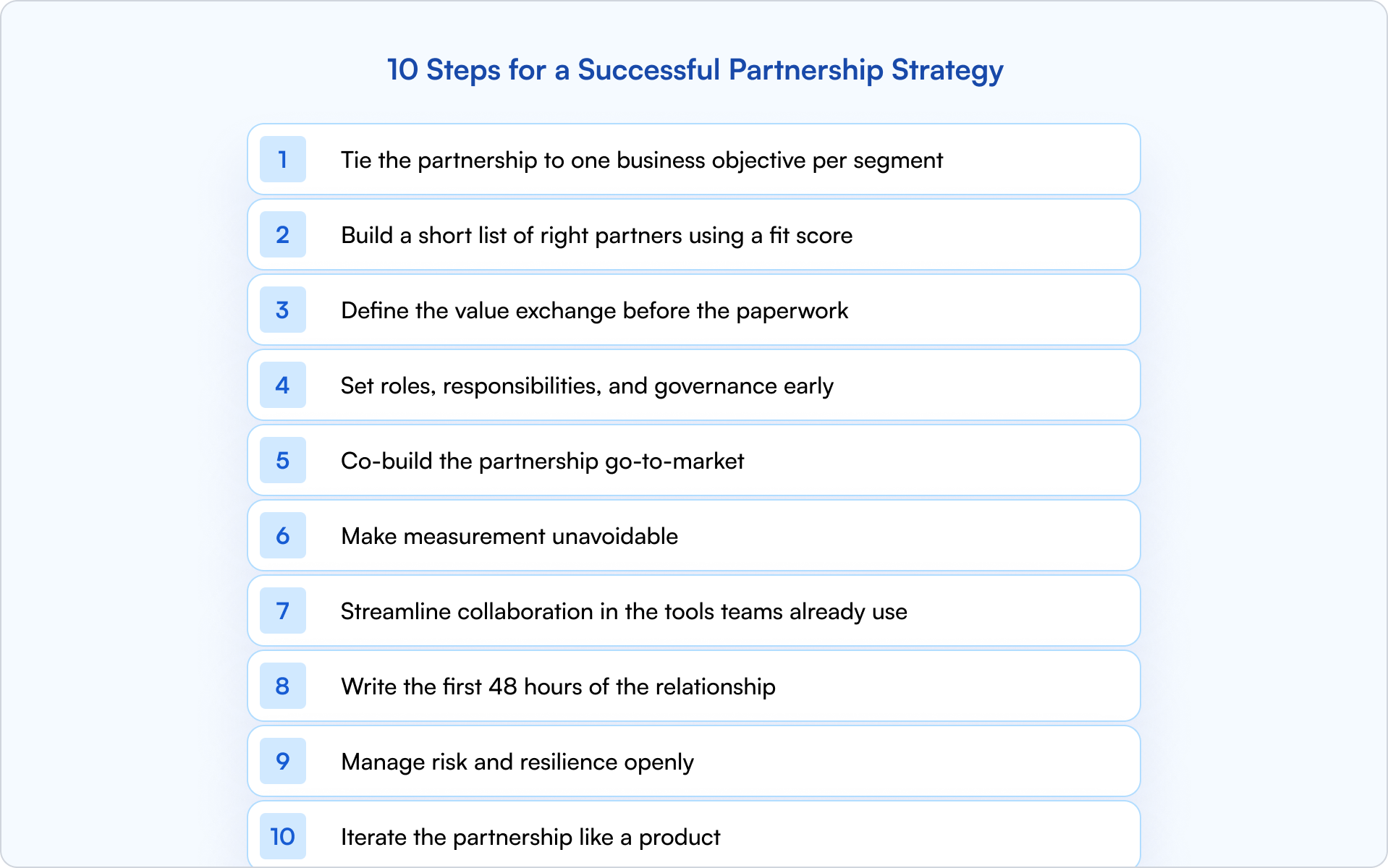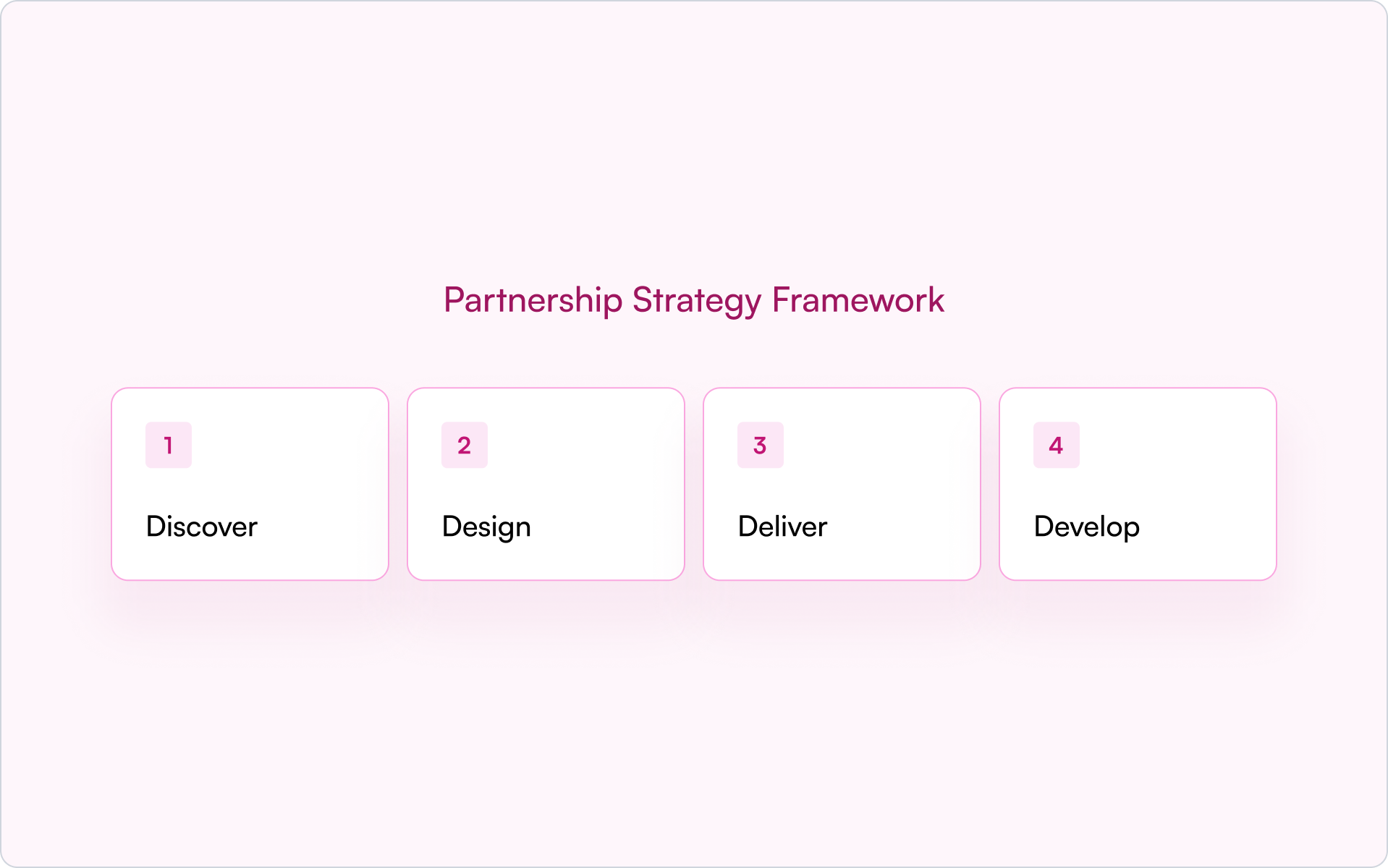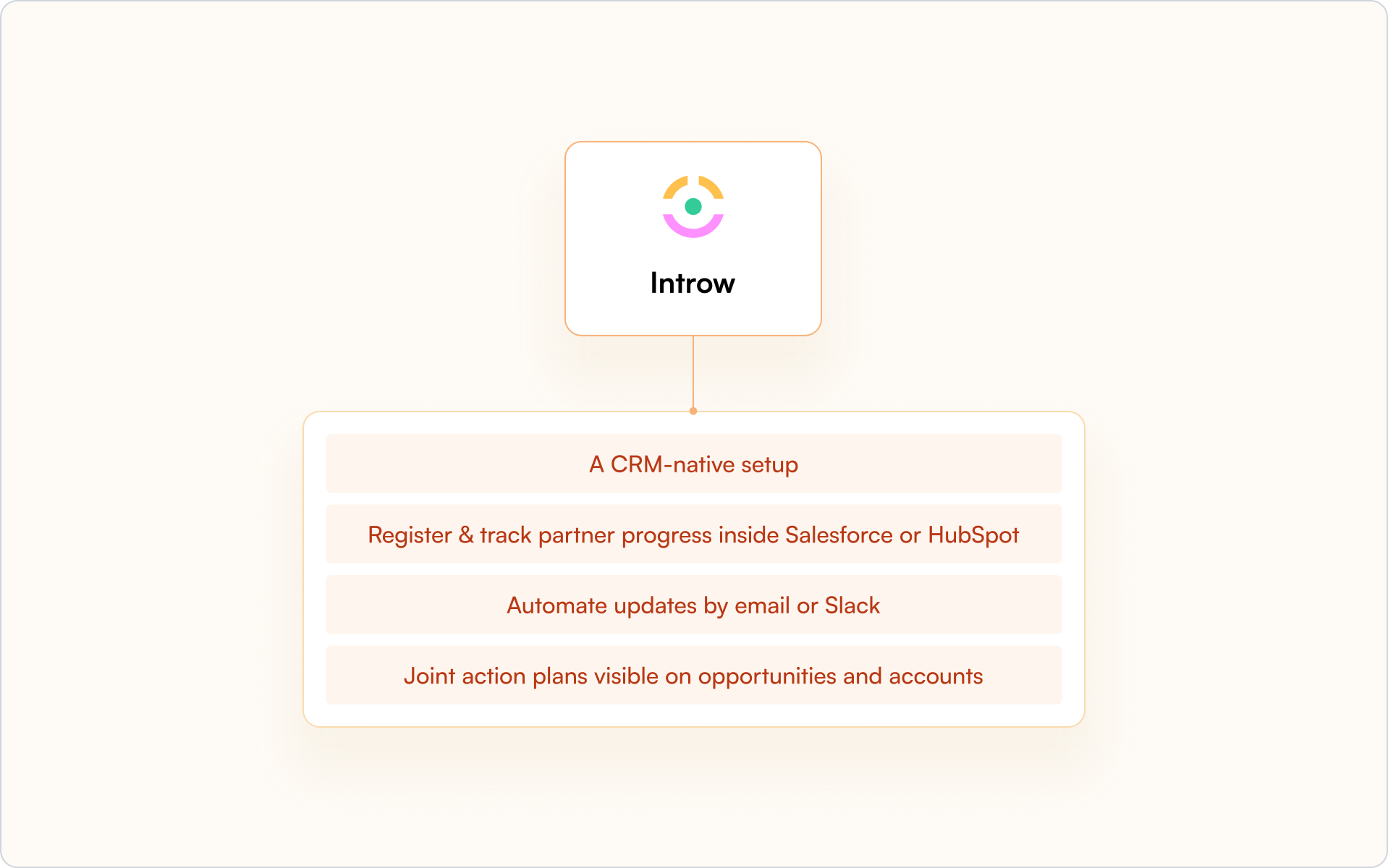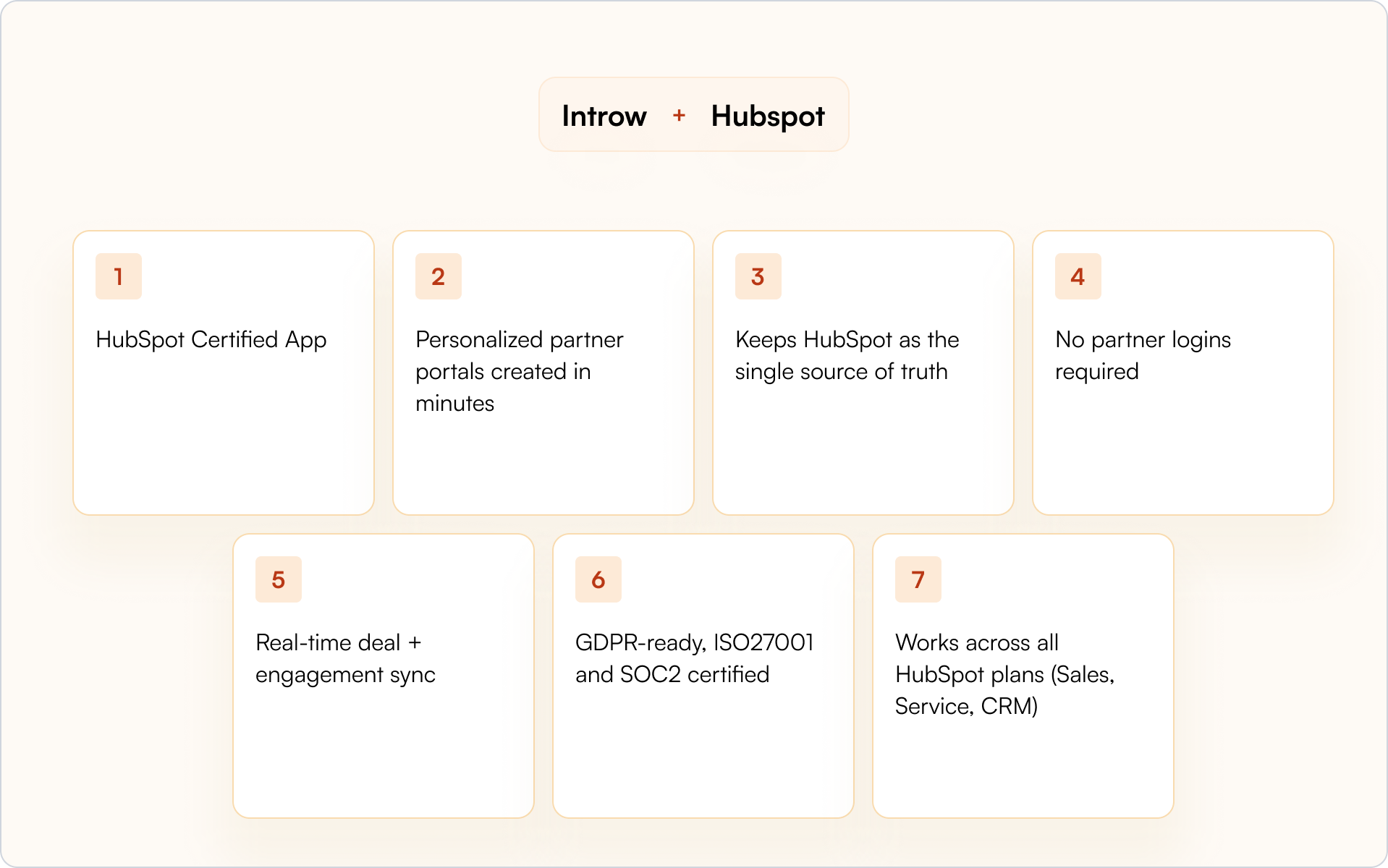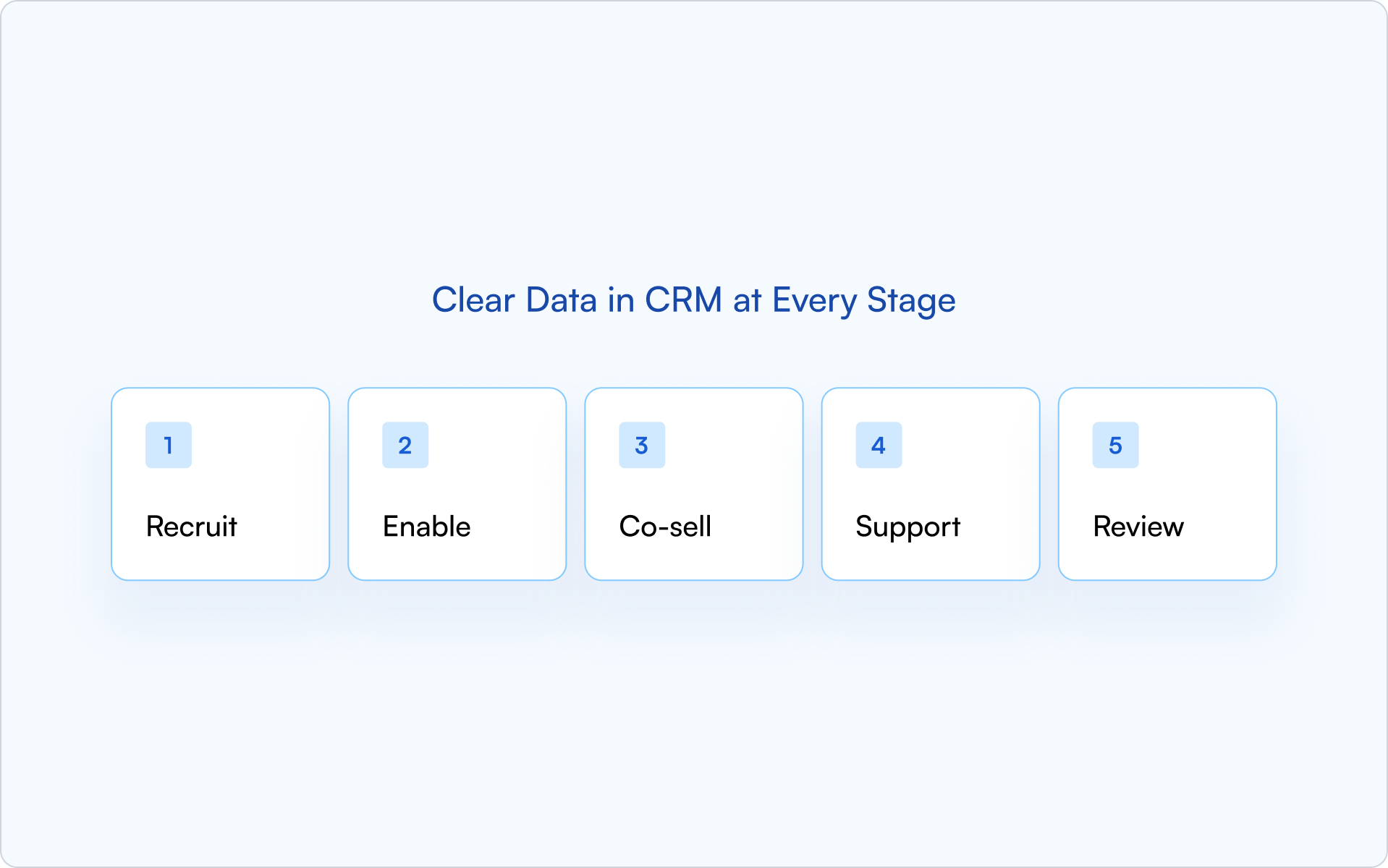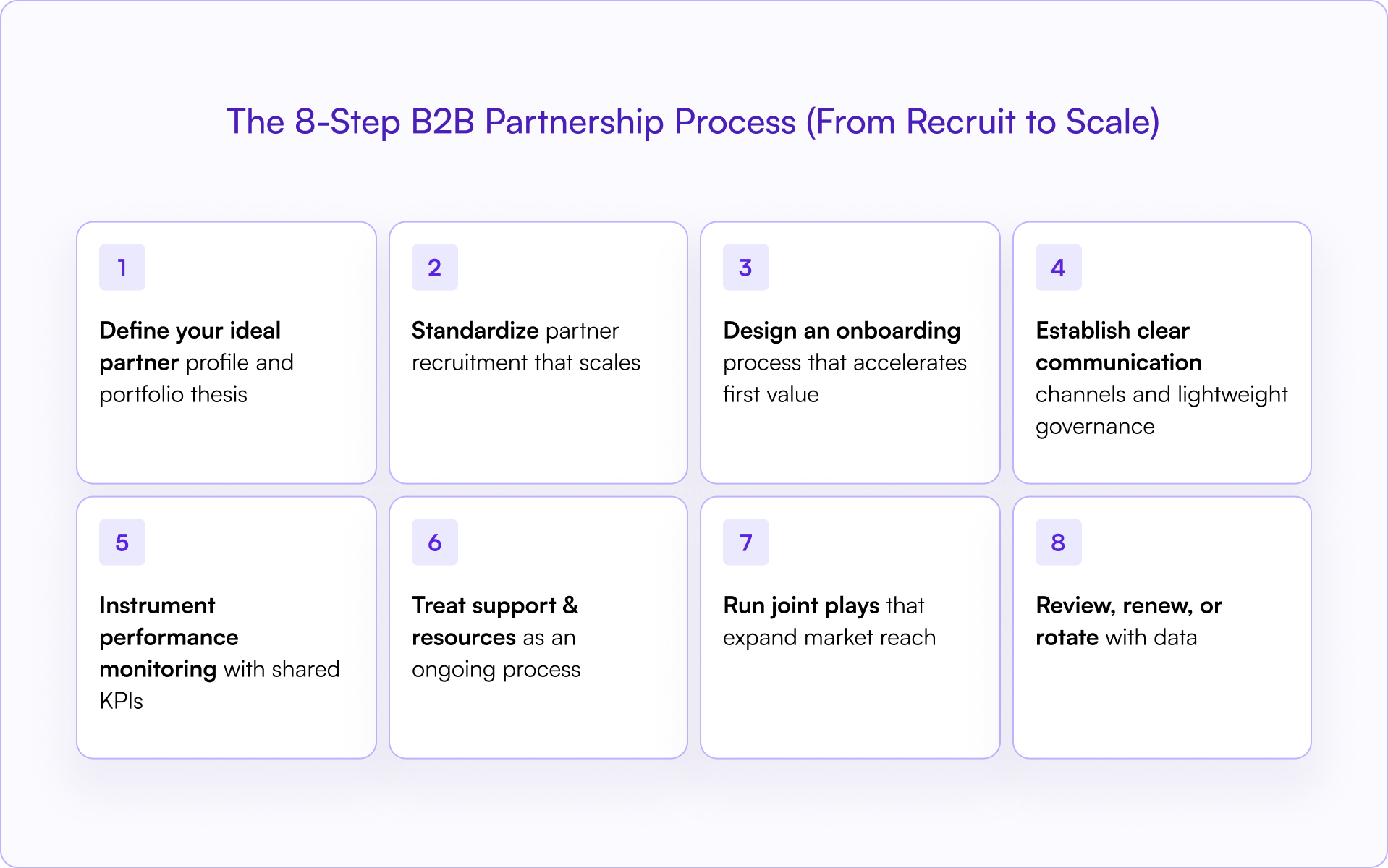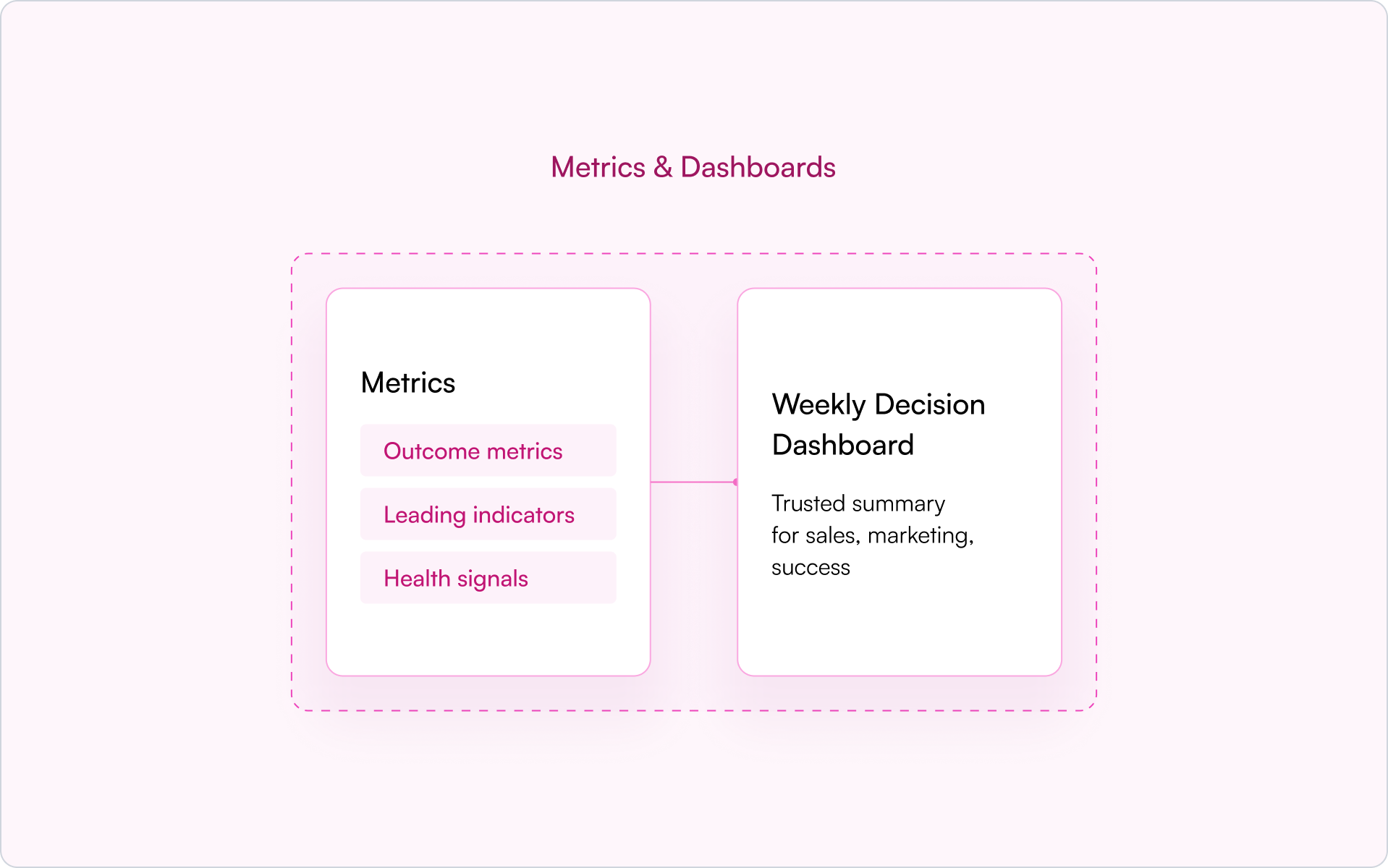Get your SaaS channel partnerships right, and they should drive a significant portion of your revenue and growth.
But to enjoy strong results from partner programs, SaaS leaders must first understand how they are performing and why.
This is where partner analytics comes in.
After all, without clear visibility, leaders risk missed opportunities, inefficiencies, and poor ROI.
Invest in partner analytics, and you’ll be empowered to make better decisions, develop stronger relationships, and enjoy more scalable, predictable partner-led growth.
In this guide, we’ll take you through the core partner analytics that SaaS businesses should be tracking, explain how to operationalize these metrics, and cover the top tools — like Introw — that power these processes.
📈 Introw makes partner analytics easy, empowering you to make the data-driven decisions necessary to take your program to the next level. Book a demo here.
What Is Partner Analytics?
Operating a strong partner analytics scheme is crucial for partnership success.
But what exactly do we mean by ‘partner analytics’, and why is it so important for SaaS brands?
Defining the Term
‘Partner analytics’ refers to tracking and analyzing data on how channel, referral, or strategic partners contribute to revenue, sales pipeline, and customer acquisition.
This means tracking key metrics that show progress towards your partner-related goals, and using these insights to regularly make data-driven decisions designed to optimize your partnership program.
While this may sound time-consuming (and once upon a time it was), in 2026, there are plenty of partner analytics tools on the market that make tracking and analysis quick and easy.
And it’s worth investing in these tools — in the fiercely competitive SaaS landscape of 2026, partner ecosystems are increasingly becoming a key revenue stream for brands.
This means that understanding partner performance is more important now than ever before.
Indeed, with tighter budgets, rising growth targets and more competition, SaaS leaders need precise insights to prioritize high-performing partnerships and scale efficiently.
Why It’s Mission-Critical for SaaS Growth
As partner ecosystems become a core segment of SaaS go-to-market strategy, partner analytics is mission-critical for SaaS growth.
Here’s why.
Firstly, chief revenue officers (CROs) and chief customer officers (CCOs) rely on having a forecastable pipeline to plan and hit growth targets.
Without clear partner data, this vital visibility breaks down.
Meanwhile, RevOps teams demand clean, clearly-attributed data to accurately report on performance and optimize processes across channels.
And channel managers must prove the impact of their partners to secure budget and resources.
This is impossible without real-time insights.
Partner analytics addresses these needs simultaneously, enabling teams to track sourced and influenced revenue, identify top-performing partners, and make confident, data-driven decisions.
Ultimately, in a highly competitive SaaS landscape where efficiency and accountability are key, measuring and managing partner performance isn’t just helpful — it’s essential for driving sustainable, scalable growth.
Core Partner Analytics Metrics to Track
So, we’ve established that tapping into partner analytics is essential for SaaS success, and we know why it’s so important.
But how can you effectively harness the power of partner analytics?
Here are six types of core partner analytics metrics to track.
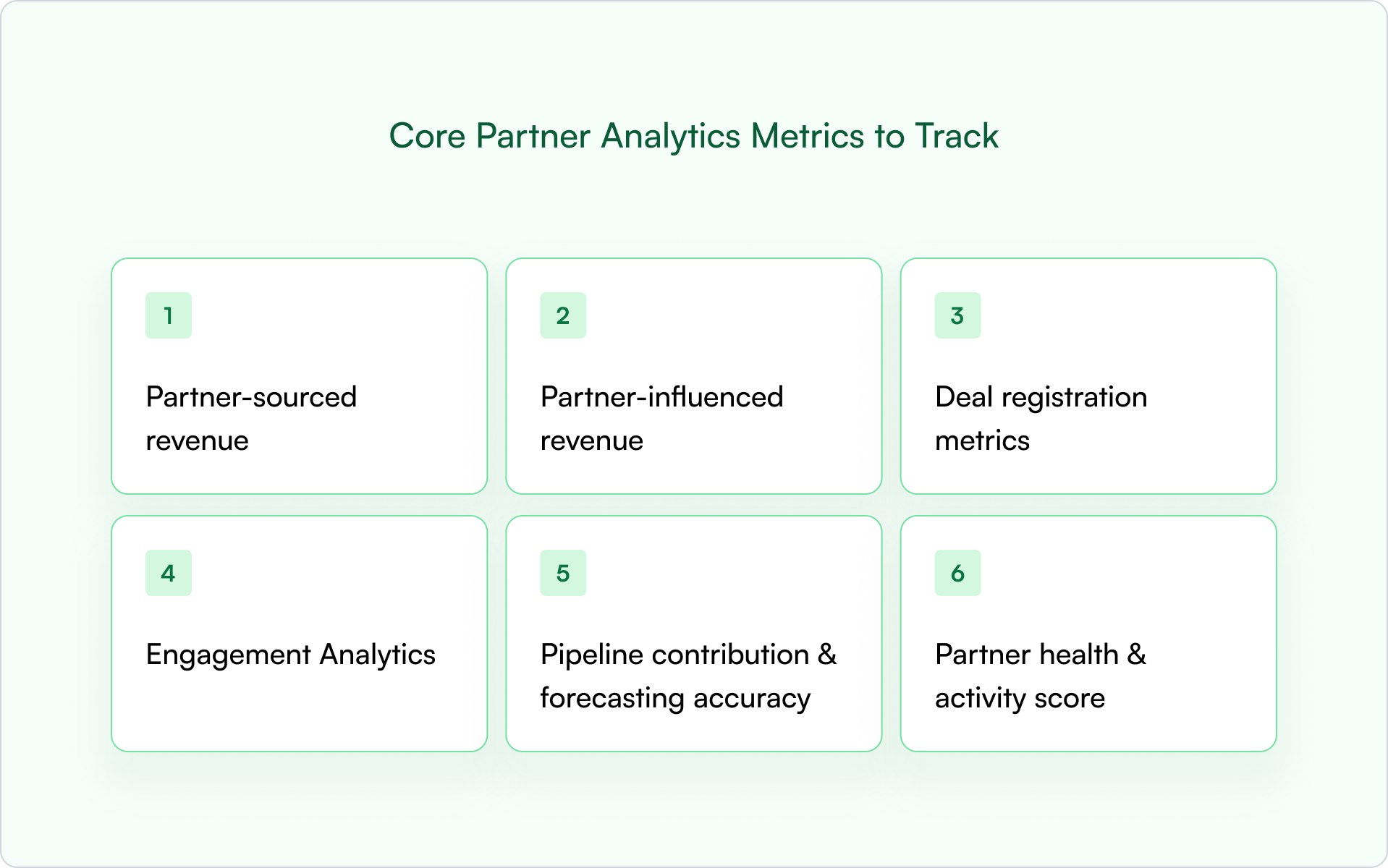
1. Partner-Sourced Revenue
The most important metric when it comes to tracking third party performance, this quantifies the total revenue generated directly through leads, opportunities, or deals sourced by external partners.
To make this metric actionable, break it down into components like:
- Total Revenue
- Number of Partner-Sourced Deals
- Average Deal Size
- Sales Cycle Length
- ARR (Annual Recurring Revenue) and MRR (Monthly Recurring Revenue)
Analyzing these dimensions by partner, deal stage, or deal type can reveal what’s working and where to optimize.
CRM alignment is critical. When your PRM integrates natively with your CRM (like Introw does with HubSpot and Salesforce), these metrics are automatically tracked — no need for disconnected spreadsheets or manual exports.
Instead, you get real-time, reliable insights directly inside your CRM, improving forecasting accuracy, boosting efficiency, and making strategic decisions easier and faster.
2. Partner-Influenced Revenue
Not every deal starts with a partner — but that doesn’t mean they don’t play a critical role. Partner-influenced revenue captures the deals where your direct sales team owns the motion, but a partner steps in to support, accelerate, or strengthen the outcome.
There are a few common scenarios where looping in a partner makes sense:
- Integration Partners: let’s say your prospect mentions they use a platform you integrate with. Inviting that partner’s CSM or account manager into the deal can build trust, reduce perceived risk, and help speed up the close.
- Reseller or Regional Partners: maybe you’re selling into a region like Australia, but don’t have local coverage. A trusted reseller can step in to help with sales execution and post-sale support — making the deal more likely to land.
While these deals aren’t “sourced” by partners, the partner’s involvement clearly adds value. The challenge is attribution: how do you track and measure that influence?
That’s where having CRM-native attribution models comes in. When you tag partner involvement — at the contact, opportunity, or activity level — you start to get real visibility into which partners are actually driving results. And over time, this data becomes a key part of understanding partner ROI, optimizing enablement, and scaling what works.
3. Deal Registration Metrics
Deal Registration Metrics track partner-submitted sales opportunities, measuring volume, approval rates, conversion rates, deal velocity, win rates and average deal size.
These metrics help SaaS leaders evaluate partner engagement, pipeline quality, and program effectiveness, revealing how effectively partners contribute to revenue growth through registered deals.
Introw automatically syncs partner data through its integrations with CRMs like Salesforce and HubSpot.
It detects partner accounts, imports contacts, and maps deal registrations in real time, keeping your CRM as the single source of truth.
The result?
Seamless collaboration and accurate tracking of partner-sourced revenue.
4. Engagement Analytics
Your engagement analytics measure how actively partners interact with your communication and enablement channels.
Put simply, high engagement means better partner performance and deal outcomes.
Key indicators include email opens, showing interest in campaigns or updates; Slack replies, reflecting real-time collaboration and responsiveness; and portal views, indicating how frequently partners access resources or training materials.
These metrics help channel managers gauge partner interest, identify engaged versus disengaged partners, and optimize communication strategies.
Tracking these interactions enables more personalized support, targeted enablement, and data-driven decisions to improve overall partner program effectiveness and return on investment (ROI).
5. Pipeline Contribution & Forecasting Accuracy
Want to assess how much revenue partners generate and how reliably their deals close?
This is where pipeline contribution and forecasting accuracy come in.
Tracking your partners’ contribution to your pipeline helps identify high-performing partners and predict future revenue.
It gives you oversight of their pipeline-related activities, such as sourcing leads, registering deals, and co-selling opportunities.
Accurate forecasting is a huge advantage for SaaS brands.
To optimize your forecasting, you must first track accuracy using forecasting dashboards inside Salesforce or HubSpot.
6. Partner Health & Activity Score
This metric measures partner engagement and effectiveness based on key interactions and performance.
For example, you may wish to track touchpoints like meetings or communications, shared content such as training or enablement materials accessed, and recent deals registered or closed.
In 2026, this doesn’t have to be consuming, with partnership trackers doing the hard work for you.
Your partner health and activity score helps to identify active, high-potential partners versus inactive ones.
This enables channel teams to prioritize support, optimize enablement, and drive stronger pipeline contribution through more engaged partnerships.
How to Operationalize These Metrics
Once you’ve chosen the most relevant metrics for your partner program, how can you implement them?
Here are three vital tips for actioning your partner metrics:
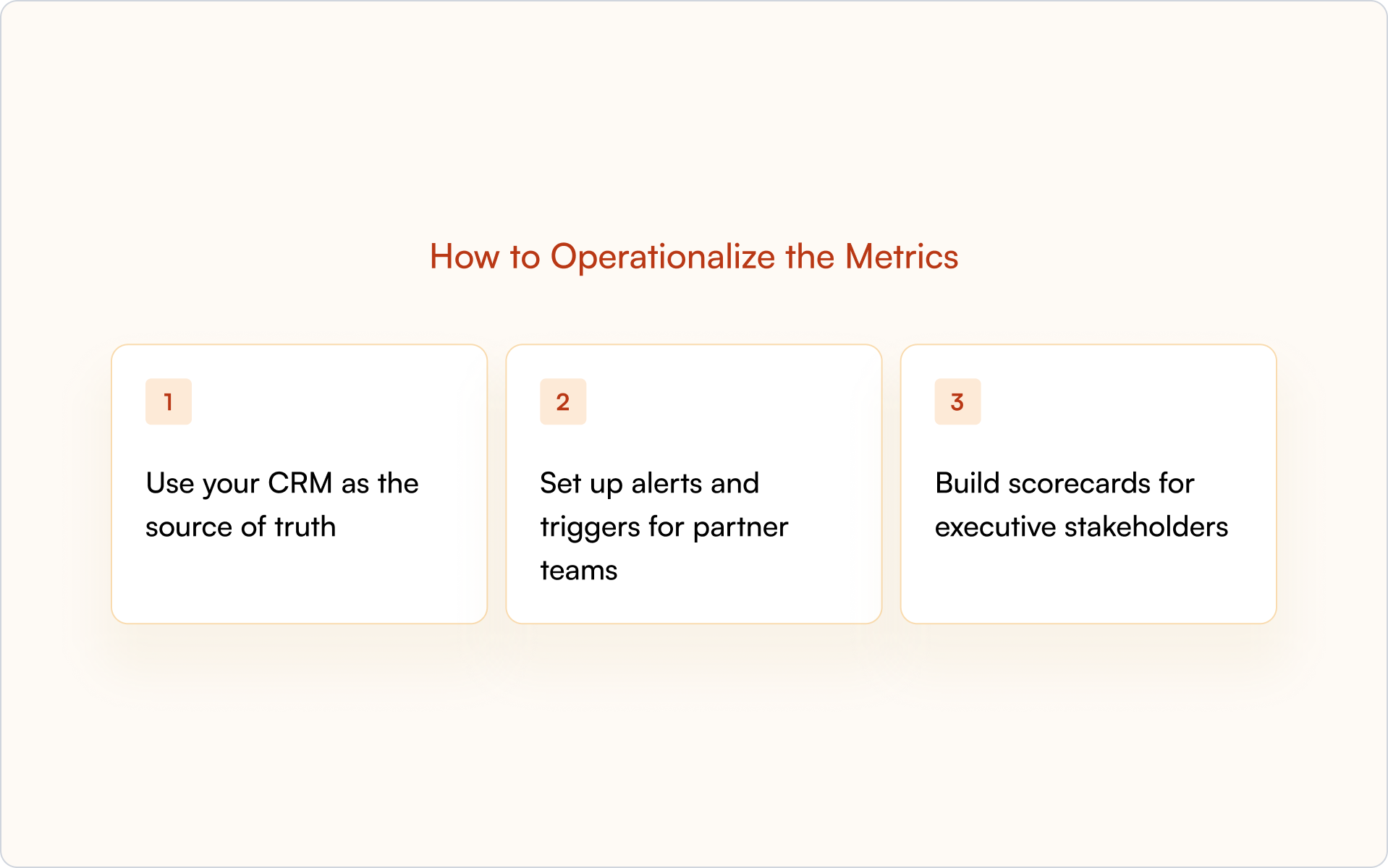
Use Your CRM as the Source of Truth
Stop managing your partner analytics in spreadsheets, and instead use your CRM as your single source of truth.
Benefits of this approach include:
- Real-time, centralized data
- Better data integrity and more accurate data
- Improved scalability
- Better security
- Automated reporting
- Partner trust and transparency
To ensure your CRM is your single source of truth, it’s vital to invest in a PRM that plugs into your CRM (Introw, for example, integrates with Salesforce and HubSpot).
Set Up Alerts and Triggers for Partner Teams
Leverage Introw’s workflow automation features to set up alerts and triggers for your partner teams in your CRM.
This setup allows you to define specific events that automatically trigger notifications, such as a partner registering a lead, a deal reaching a new stage, or a task being assigned.
These notifications can be sent via Slack or email, ensuring real-time communication with your partners.
This approach keeps partners informed and engaged without requiring them to log into a portal, facilitating off-portal collaboration and timely updates.
Build Scorecards for Executive Stakeholders
Creating scorecards for executive stakeholders helps to align your partner program with your business goals — and achieving this is essential for success.
You can use dashboards to clearly show the impact of partners on pipeline and revenue, which is crucial for engaging CROs and driving continued investment.
With this in mind, scorecards should highlight KPIs like partner-sourced revenue, win rates, and deal velocity.
Include mutual action plans to show progress on shared goals and timelines, and incorporate automated reporting to keep leadership informed in real time.
This data-driven approach builds credibility, helps prioritize strategic partnerships, and ensures the partner program is seen as a measurable growth driver — not just a support function.
Tools That Power Channel Partner Analytics
In 2026, plenty of tools can significantly boost your partner analytics efforts.
Excellent partner relationship management (PRM) software like Introw is vital for success.
Not only does it improve forecasting, performance tracking, efficiency and partner relationships, but it centralizes your collaboration and automates tedious, time-consuming tasks.
What to Look For in a Partner Analytics Tool

- Native CRM integration: Ensures seamless, real-time syncing of partner data with your CRM platform, such as Salesforce, HubSpot, reducing data silos and improving accuracy.
- No manual data mapping: Automatically recognizes and aligns partner fields and objects without requiring a tedious setup.
- Custom workflows per partner type: Allows you to tailor processes, alerts, and reporting based on partner tiers.
Why Introw PRM Stands Out
Here’s why you should consider investing in Introw PRM.
- A powerful analytics engine built into your CRM. Introw seamlessly integrates with your existing CRM, such as Salesforce or HubSpot, embedding partner analytics directly within your primary sales platform to eliminate data silos.
- Track deal flow, engagement and revenue — no external tools needed. With Introw, you can monitor partner deal registrations, engagement metrics, and revenue contributions in real-time, all within your CRM, removing the need for separate tracking tools.
- Fully white-labeled scorecards enabling partner performance insights. Introw provides customizable, white-labeled partner scorecards that offer real-time insights into partner performance, enabling you to evaluate and prioritize partnerships effectively.
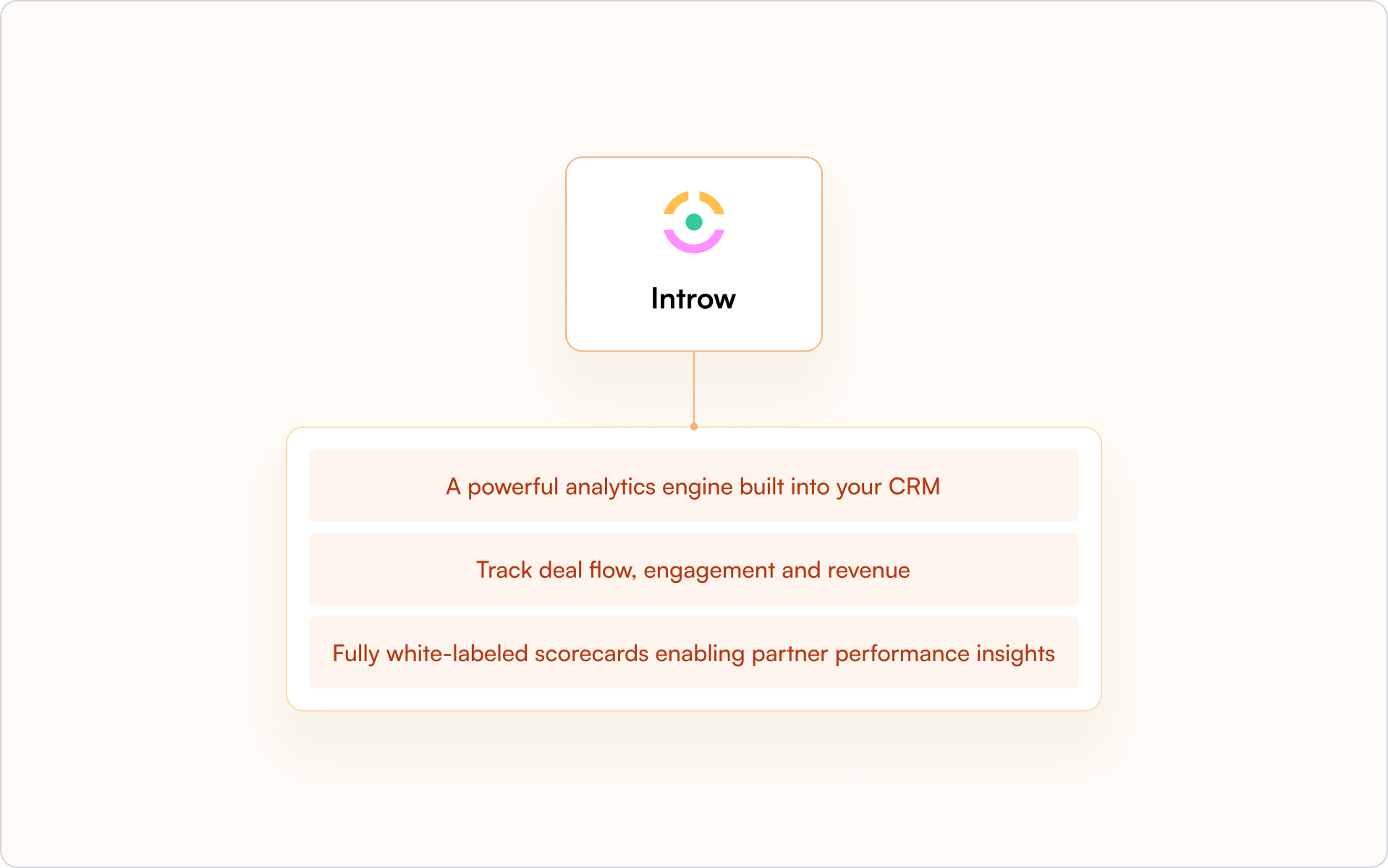
➡️ Find out more about Introw’s partner portal or request a demo here
Summary: From Insight to Impact
In 2026, tracking partner analytics is non-negotiable.
After all, partner ecosystems are driving a growing share of SaaS revenue.
Without clear data on deal flow, engagement, and ROI, companies risk underperforming partnerships, misallocated resources, and missed growth.
Partner analytics empower smarter decisions, stronger collaboration, and measurable impact in today’s ecosystem-led go-to-market strategies.
To recap, the six key metrics every SaaS team should monitor are:
- Partner-sourced revenue
- Partner-influenced revenue
- Deal registration metrics
- Engagement analytics
- Pipeline contribution and forecasting accuracy
- Partner health and activity score
✅ Is it time to audit your current partner analytics system? Explore how Introw could level up your partnerships by booking a demo here today.
What Is Partner Analytics?
Partner analytics is the process of gathering and analyzing data related to your channel partners, such as resellers or affiliates. This helps organizations understand their partner performance and make data-driven decisions designed to improve partner relationships, optimize collaborations and maximize mutual success. Most businesses with established partner programs use PRMs such as Introw to effectively harness the power of partner analytics, without the time drain. Introw monitors partner engagement activities and displays real-time dashboards that track key performance metrics.
How To Do Partner Analytics in 2026?
To effectively harness the power of partner analytics and gain insights, start by integrating your CRM with a partner management tool such as Introw. Use your PRM to track key metrics such as revenue, deal pipeline, and engagement activity. Set up real-time dashboards to monitor performance, identify trends, and then make data-driven decisions to optimize partnership outcomes and enhance performance.
Which Partner Analytics Metrics Should I Track in 2026?
The exact channel partner performance metrics to track depend on your company’s specific circumstances, such as the number of channel partners you work with and your business goals. However, any business running a partner program will want to track channel partner metrics including partner-sourced revenue, deal registration metrics, engagement analytics, pipeline contribution and forecasting accuracy, and partner health and activity score.
What Features Should I Look For In Partner Analytics Tools in 2026?
In 2026, top partner analytics tools include features such as native CRM integration, no manual data mapping, custom workflows per partner type, fully white-labeled scorecards, and detailed partner performance insights.


.svg)
























